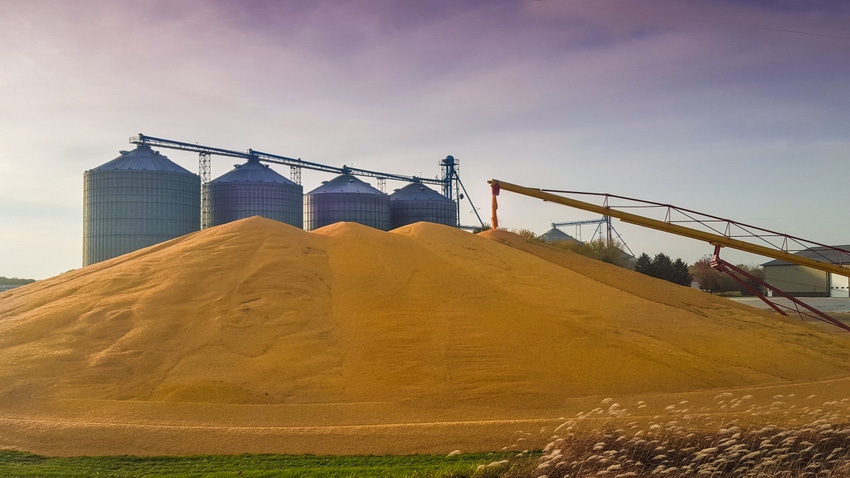Financial stress continues to build for many in agriculture amid unprecedented uncertainty from trade disputes and weather disasters.

Global economic development continues to slide as tariffs create a drag on global trade and manufacturing, according to the latest "Quarterly Rural Economic Review" from the CoBank Knowledge Exchange Division. The world economy continues to slow amid the ongoing U.S.-China trade war. Confidence in the trade war ending in 2019 is dimming. Additionally, persistent rainfall across the U.S. has significantly disrupted the agriculture sector.
Trade disputes still loom between the U.S. and China, the European Union, Japan and Mexico, and progress has been slow, with no major trade victories yet. Federal aid of $16 billion for additional trade relief and $3 billion for disaster relief, will help soften the blow for farmers, but not agricultural retailers.
The CoBank report states that the U.S. economy has been performing well, but there are warning signs, despite impressive gross domestic product growth of 3.1% in the first quarter. Much of the growth was supported by an increase in inventories as companies braced for an escalation in the trade war with China. The pace of investment spending, manufacturing and demand for capital goods has eased in recent months, and the slowdown is widely expected to persist through the remainder of the year.
The Federal Reserve Bank voted in June to keep interest rates steady but signaled that it is open to lower rates in the last half of 2019 on signs that the U.S. economy is slowing.
Financial stress for many in agriculture continues to build amid unprecedented uncertainty from trade disputes and weather disasters. Nearly all sectors of agriculture were affected last quarter by the inundation of spring rains that kept farmers out of fields throughout the U.S.
The amount of acreage lost to prevented planting will remain the major unknown in the months ahead for agricultural commodity markets. The National Agricultural Statistics Service (NASS) reported on June 28 that producers planted 91.7 million acres of corn, up 3% from last year. However, growers are only expected to harvest 83.6 million acres of corn for grain, although this still is up 2% from last year.
“Delayed plant maturity of late-seeded crops will further muddy estimates on yield and crop sizes throughout the remainder of the 2019 growing season,” CoBank said.
Grain, biofuels and farm supply
Trade continues to create headwinds for U.S. grains and oilseeds. Domestic demand has not kept up with last year’s large corn supplies, but the soybean crush has remained robust, taking advantage of low soybean prices.
Wet weather in the Midwest has significantly reduced corn production expectations. Corn planting progress has been the slowest on record due to the soaking-wet spring. The weather is also worrying some ethanol producers and has created headaches for the farm supply sector, CoBank reported. Ethanol producers, already enduring one of the longest low-margin periods in years, are now facing the prospect of limited corn availability and higher corn prices.
Agricultural retailers will continue to contend with the weak farm economy following a difficult fall agronomy season. “Weather has dominated the farm supply sector for nearly nine months now. Last fall, wet weather prevented many farmers from getting fieldwork done and many ag retailers from getting fertilizer in the ground. The story has been the same for the past three months,” the report noted.
Animal protein
The U.S. animal protein sector continues to be affected by factors largely outside of the control of producers and processors. Weather, African swine fever (ASF) and trade threats have disrupted the U.S. animal protein sector. In particular, the outbreak of ASF will affect not just pork but the overall animal protein trade for years to come. Livestock profitability has improved, with ASF supporting hog and beef production margins, CoBank noted. Dairy prices have also begun to recover as production growth slows.
“Meat and poultry producers haven’t seen corn prices over $4/bu. much in the last five years. With the threat of additional weather disruptions this summer and the implications to yield, feed costs look increasingly volatile,” the report added.
An expected decline in China's pork production will spur a surge of beef, pork and chicken imports into China as it tries to fill a shortfall in its animal protein supply that no single pork-producing country will be able to fill. Hog prices and feed costs indicate healthy margins for producers through 2020, but that could change quickly if pork exports do not pick up.
Through the first four months of the year, chicken exports were down approximately 1%, but leg quarter prices have increased from 28 cents/lb. at the beginning of the year to near 50 cents/lb. With more normal weather expected for the rest of the summer and this fall, and with new poultry plants ramping up production, signs point to protein supply growth to pick up in the second half of 2019. The most significant development for U.S. chicken exports would be the reopening of China's market, which banned U.S. poultry four years ago over avian flu but is expected to reopen if a trade deal between the U.S. and China is announced.
About the Author(s)
You May Also Like



.png?width=300&auto=webp&quality=80&disable=upscale)

